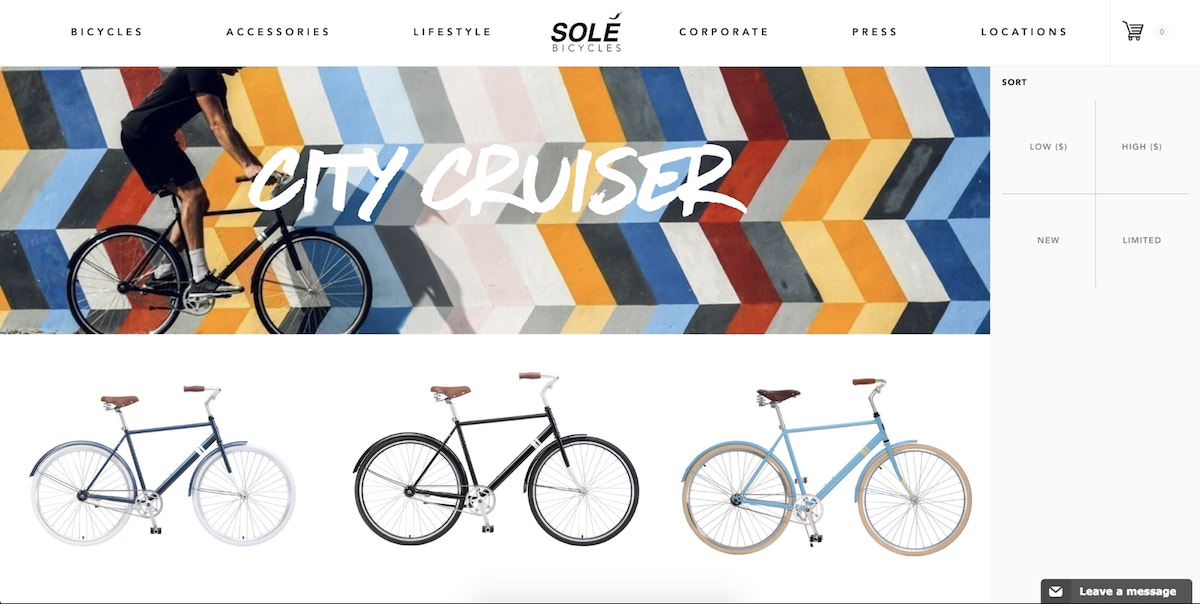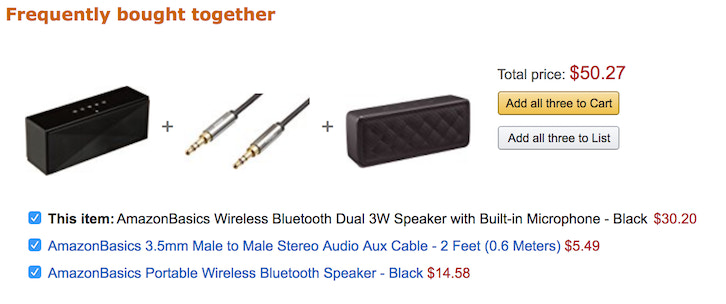One of the biggest challenges aspiring entrepreneurs face is finding profitable, in-demand products that will sell, whether it’s a single product or a full product line that occupies a niche in a market.
Coming up with product ideas is admittedly a little tricky, and the importance of selling a product people want can leave even the most motivated people stuck in analysis paralysis. It often feels like everything you could possibly sell is already being sold—not to mention the reality that there will be plenty of competition in the most popular product categories.
Fortunately, there are still golden opportunities out there, proof of this being new products successfully launch all the time. To help you get started, we’ve put together a shortlist of practical ways to find products to sell in your online store.

Free Guide: How to Find a Profitable Product to Sell Online
Excited about starting a business, but not sure where to start? This free, comprehensive guide will teach you how to find great, newly trending products with high sales potential.
Get How To Find A Product To Sell Online: The Definitive Guide PDF delivered right to your inbox.
Almost there: please enter your email below to gain instant access.
We'll also send you updates on new educational guides and success stories from the Shopify newsletter. We hate SPAM and promise to keep your email address safe.
Ways to Find a Product to Sell
- Solve a customer pain point
- Appeal to enthusiastic hobbyists
- Go with your personal passion
- Consider your professional experience
- Capitalize on trends early
- Read customer reviews on existing products
- Find product opportunities in keywords
- Litmus test before you launch
- Browse what’s trending on online marketplaces
- Research products with higher profit margins
- Start your search with related products
- Always be on the lookout
Let’s take a look at each of these strategies to find products in more detail.
1. Solve a customer pain point
Solving a customer pain point will always be an effective way to develop a product people want. Tylenol wouldn't be in business if literal headaches didn’t hurt. Abstract customer pain points, meanwhile, are usually about addressing poor or frustrating experiences with the current selection of available products.

Active Hound is an example of a brand that solved a pain point in the market. After talking to other dog owners at their local park, the founders, Lucy and Zak, noticed pet owners were continually frustrated that the pricey dog toys they were buying lacked the durability needed to withstand the wear and tear of a playful pet. Hearing about this frustration inspired them to create a line of ultra-durable dog toys. Now, they’ve expanded their offering to selling toys, treats, and a variety of other dog products.
It's worth paying close attention whenever you notice common frustrations with an existing line of products. Being keenly aware of the pain points and small annoyances you come across in everyday life could be just what you need to come up with your next profitable product idea.
2. Appeal to enthusiastic hobbyists
When consumers are passionate about a particular trade or hobby, they’re usually more inclined to invest money to get the exact product they want. This willingness-to-pay can be an important qualifier when evaluating the potential opportunity of any product, or line of products. (For example, golfers are well-known for investing hundreds or even thousands of dollars to lower their score by a few strokes.)
Resource: Wikipedia’s list of popular hobbies.
Additional benefits can include higher levels of engagement and loyalty with your brand, as enthusiastic customers are generally more involved in the industry and get more value out of the products they purchase. Let’s look at a few examples.
Hand Band Pro

Hand Band Pro sell to CrossFit enthusiasts who want a way to keep their exercises intense without ending up with ripped or calloused hands.
Impact Mouthguards

Impact Mouthguards sell dentist-level quality mouthguards that come in wild designs that capture the competitive spirit of their customers.
Solé Bicycles

Solé Bicycles design products for bicyclists who view their rides as a "mobile canvas" to represent their personality and style.
3. Go with your personal passion
While there are inherent risks in choosing a niche based on your own interests, it certainly doesn’t have to be a recipe for disaster. Using your know-how to create and position a unique product can be extremely profitable.
Founder/market fit matters, because building a business is a lot of hard work, and you’ll be better equipped to stay motivated and overcome the hurdles if you are deeply invested in what you are selling.
Eric Bandholz started Beardbrand as a blog discussing business and sales strategy. Slowly, his passion for beards crept into the blog. Over time, he turned his passion for the bearded lifestyle into a separate and successful ecommerce business selling beard-grooming products.

Moorea Seal is another example of someone who turned their passion into a successful online business. In 2010 Moorea, a full-time artist living in Seattle, became self-employed through various creative pursuits: blogging, running her own jewelry business, freelance illustration, and graphic design.
In late 2012, she retired early from design to spend more time on her passions and narrow her focus. In 2013, Moorea opened a store on Shopify.

The Moorea Seal shop is a curated selection of beautiful accessories that highlight handmade products from artists in the United States. Each of the designers has been selected by Moorea herself, and 7% of all proceeds benefit nonprofits that are close to her heart. Moorea Seal has achieved notable success and has been featured in several blogs and publications including The Huffington Post, Design Sponge, and Babble.
4. Consider your professional experience
Has working in a particular industry helped you learn the ins and outs? Maybe you have a skill or a particular set of experiences that makes you more knowledgeable than the average person on a particular topic. Turning your expertise into your own online business is a smart way to enter the market with a leg up that isn't easy for others to duplicate or copy.

Retro Supply is an online shop that sells digital assets for graphic designers and illustrators inspired by history. Founder Dustin Lee, a designer by trade, pivoted from a running a freelance web design shop to generating more passive revenue through Retro Supply’s selection of digital products.
5. Capitalize on trends early
Recognizing a trend early enough can be a significant win for a new business. It allows you to carve out a place in the market and establish yourself as a leader before others have a chance to. And thanks to the nature of digital marketing, your paid spend will probably be lower and opportunities to build long-term SEO traffic may be more abundant.
The key is to not confuse a “fad” with a genuine “trend.” A fad is something that has surged into the limelight based purely on novelty or a gimmick; while fads can present great marketing opportunities, remember that if you build your business on a fad the demand will eventually fizzle out. A trend, meanwhile, is something that fulfills an existing need in a new way, which is why their demand holds for much longer than a fad.

Knox Labs were early to market with their cardboard VR headsets. Founder Taron Lizagub tested the initial idea with a scrappy splash page, and to his surprise, he was able to quickly pre-sell around 500 headsets—the business later went on to make nearly $3 million in sales in 2015.
Here are a few ways to keep an eye on what’s trending so you can act quickly on potential opportunities:
- Social listening: This can be as basic as looking at the trending hashtags on Twitter or topics on Facebook, or as advanced as using social listening tools to identify and monitor trends over time.
- Google Trends: Look at the popularity of topics over time, and see what’s hitting a spike in interest.
- Trend Hunter: The “world's largest, most popular trend community” uses data, artificial intelligence, and real humans to identify consumer insights and new opportunities.
- Reddit: “The front page of the internet” showcases forums about pretty much every topic under the sun. Visit the popular page to see what people are buzzing about.
6. Read customer reviews on existing products
Whether you already sell products online or not, there is a wealth of insight you can glean from customer reviews.
If you already have an established online store with a bit of traction, you can see what customers are saying about your existing products. Are there are any trends or interesting bits of feedback you can use as inspiration to develop your next product? Pay special attention to shortcomings and complaints being shared.
If you don’t currently have a store, have a look at customer reviews for other brands and products in the industry you want to explore. What “wishlist” feedback is being shared about potential improvements to already successful products? What add-ons or additional products do customers consistently bring up?
If you’re not sure of the industry or product category to explore, consider a specific demographic and focus on brands and products that those individuals gravitate toward.
7. Find product opportunities in keywords
It’s no secret that organic traffic from search engines is an important marketing channel. Searching for keyword opportunities means strategically looking for a product based on the search queries people are using, the number of searches per month, and overall competition for those searches.
This approach can be fairly technical and requires an intermediate understanding of keyword research, as well as search engine optimization. The advantage is that pairing product demand to existing keywords can be an effective way to capture consistent organic traffic from Google, but it comes with its own set of risks, namely that if you rely on search engine traffic you'll be overly exposed to changes in Google's algorithm.
Real product validation only happens after money changes hands.
When Andrew Youderian first got into ecommerce, he knew from the beginning that the viability of the business was more important to him than being passionate about the product he sold. So he opted for a technical approach in picking a niche he felt would have the highest chance of success, basing his selection on careful keyword research. Andrew found an opportunity to rank for searches in the fishing equipment industry as well as for CB Radios.
Remember that Google isn’t the only place where people start their search, and as such isn’t the only place to mine for keywords. Online marketplaces also have their own search functions, which means lots of keyword data as well. Here are a few tools you can use to uncover popular search terms, which may help you find the next product to sell:
- Keywords Everywhere
- Keyword Tool
- KeywordInspector
- Helium 10
- Sonar
- EtsyRank
- Alibaba Hot Keywords and Industries Keywords
8. Litmus test before you launch
As we’ve shared before, real product validation only happens when money changes hands, so you can’t be sure you’re onto something until people swipe their credit cards.
However, securing some level of interest and investment from potential customers before you ship is undeniably valuable. Even great products can flop when they launch to no one. If you already have an idea, but you’re not quite ready to invest heavily in it, minimize your upfront investment and test the market by building a landing page to promote your potential product—with a way for interested customers to leave their email—and run a few paid ads to drive traffic to it.
Of course, there are a variety of factors that will determine the success of your campaign. But any level of initial traction says something. You may, at the very least, want to consider investing further in your idea.
9. Browse what’s trending on online marketplaces
If you prefer to sell products on your own online store, you can still gather inspiration by checking out what’s popular and trending on other marketplaces. Browse sites like Amazon, Etsy, and eBay, and browse lists like ‘What’s hot,’ ‘Most wished for,’ and other categories that showcase current customer demand. Here are a few links to get you started:
- Amazon Best Sellers
- Amazon Most Wished For
- Amazon Movers & Shakers
- Etsy Most wanted
- Etsy Best selling items
- Etsy Most popular item
- Trending on eBay
- Popular on Kickstarter
On individual Amazon product pages, you can see the “Best Sellers Rank” to find out how popular an item is in its category.

To dig a little deeper, consider using a tool like Jungle Scout, which helps you identify top-selling products and popular sellers by letting you filter by category, price, sales, and other attributes.
10. Research products with higher profit margins
Products with little overhead provide a low-risk way to get started because it’s easier to attain higher profit margins compared to products that are more expensive to produce. When pricing your products, you need to account for the total resources that you’ve put in to sell the product or your cost of goods sold (COGS).
You have to factor in not only how much it costs to create the product, but also how much it costs to promote, hold, and even ship. Look for low-cost items that can generate a high return on investment (ROI). Remember, lightweight items will be cheaper to ship. And just because a product is inexpensive to purchase wholesale, that doesn’t necessarily mean you can turn it over for the highest ROI.
11. Start your search with related products
Do you have an existing interest in a particular industry or product category? Check out related items or products that customers frequently purchase together in that niche. Amazon is a useful resource for this, as there are several locations where the site displays product affinity.
A. Products customers frequently buy together

B. Other products that customers frequently buy

C. Similar items that Amazon recommends

D. Related sponsored products

12. Always be on the lookout
One of the most straightforward strategies you can implement today is to keep an open eye and an open mind.
New ideas can pop up at the most unexpected moments, and it’s important not to dismiss any chance thoughts you may have. Keep a list in your smartphone or with a pen and paper to refer back to later when it’s time to conduct market research for your product idea.
Which product opportunities will you find?
Choosing the right product or product category can be instrumental to your success. The products you choose will shape your entire business, from marketing to shipping, to pricing, to further product development.
One final reminder I’d like to share is don't be afraid to look at smaller product categories and niches. Even though a niche is a smaller subset of a broader category with fewer overall customers, it often makes up for this shortcoming by way of fewer competitors and a more targeted audience. Competition is good because it validates existing demand for a product, but the right amount of competition is even better because you’ll have the opportunity to fill a unique need and cost-effectively reach your customers.
Hopefully, these ideas will get the gears turning and help lead you to a product people want to buy and that you’re equally excited to sell. 🙌
More advice on finding a profitable product to sell:
- Rev Up Your Revenues: Trending Products to Sell in 2018
- 17 Places Ecommerce Entrepreneurs Go to Find Business Ideas
- 12 Product Sourcing Apps for Shopify

